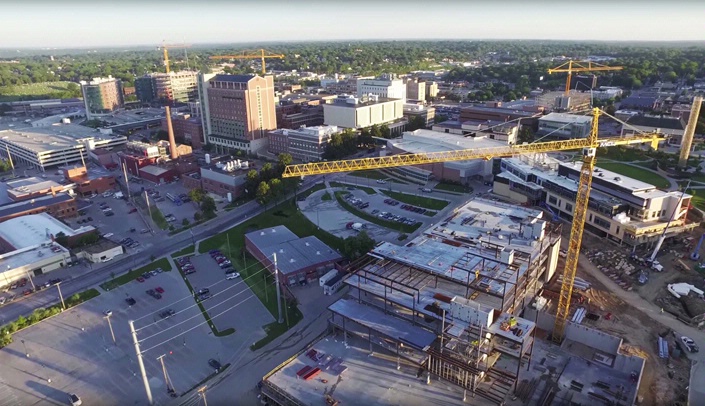Imagine cutting 25 percent energy consumption from your home. It’s a tall order for a residence, but even more so when your “home” spans more than 100 acres.
What others are saying
“UNMC has been a regional leader in energy efficiency and demand reduction as evidenced by their 25.6 percent energy reduction over the past five years. These kinds of reductions and initiatives do not come by accident. They are part of a strategic focus and great examples of how to be great stewards of our resources in Nebraska.”
-OPPD CEO Tim Burke
“We commend UNMC and Nebraska Medicine on their leadership for implementing sustainable solutions in our community. We understand the importance of improving efficiencies and lowering emissions in our homes, industries and hospitals. UNMC has made tremendous strides in the past five years.”
-MUD President Scott Keep
That’s why UNMC and Nebraska Medicine are proud of having reached its lofty energy reduction goals, as outlined in the Sustainability Master Plan.
The medical center’s main campus at 42nd and Emile streets used 25 percent less energy in 2015 than it did five years ago, despite adding more square footage to campus.
“I’ve always said that academic health science centers should be leading the way in energy conservation,” said UNMC Chancellor Jeffrey P. Gold, M.D. “We’re especially proud of meeting this energy reduction goal. Not only does it show strong stewardship of taxpayer dollars, it also has a positive effect on the planet, people and ultimately everyone’s health.”
UNMC and Nebraska Medicine strategically reached its goal through a series of actions including:
- Implementing a new building control system providing greater control of temperatures and airflow.
- Making sure all new UNMC construction is LEED-certifiable (Leadership in Energy & Environmental Design), meaning the facility uses best-in-class building strategies and practices.
- Upgrading Central Utility Plant equipment to create greater efficiencies.
- Increased employee engagement and energy curtailment practices, which included turning off lights where they weren’t needed, closing mini-blinds and curtains to reduce solar gain, shutting fume hood sashes when not in use, replacing aging equipment with more efficient models, and turning off and unplugging electrical equipment when not in use.
Over the past five years, the medical center also reduced its peak electrical use, down 28 percent from 2010. Peak electricity use is the maximum amount of electricity needed at any given time. Reducing peak electricity ensures there is enough electricity for everybody on hot and humid days and helps to keep our costs lower.
UNMC’s domestic water consumption was reduced from a baseline of 225.1 million gallons per year to 173.5 million gallons per year, a 23 percent decrease.
These combined efforts have resulted in a 20 percent decrease in greenhouse gas emissions and has a measurable, positive effect on the health of our community, specifically air quality. And, that’s good news to anyone who has or knows someone with asthma, chronic obstructive pulmonary disease or chronic bronchitis.
It also conservatively equates to more than $10 million in money the medical center would have had to spend on utilities.

Ken, congratulations to you and your staff. This is a remarkable achievement .